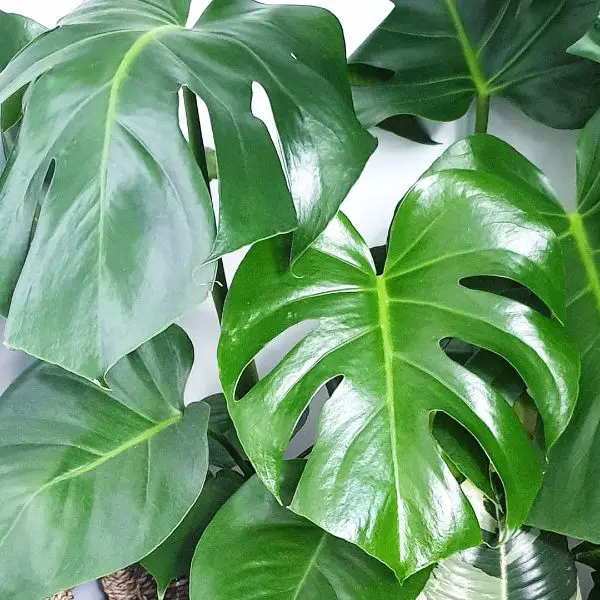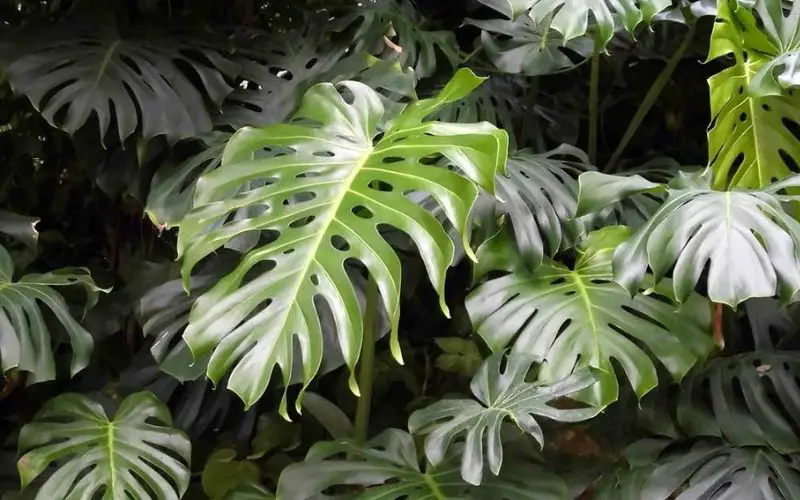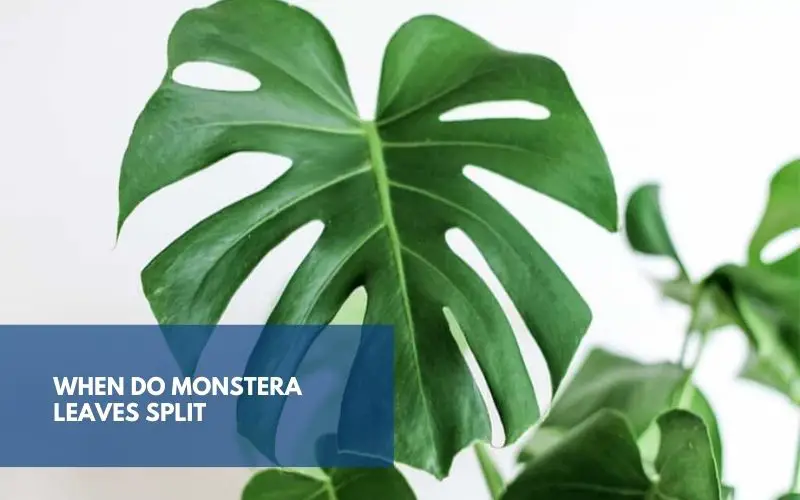It’s such a complicated journey when you prepare to unwind and watch out for your tree at home. It looks more complex than you expected. So how to plant and take care of the tree to split its leaves at the right time? Besides, you should know how sure your tree is in good condition. Please follow the article below.
When Monstera leaves split?
You should focus on three fundamental factors for the Monstera’s leaves to split: light, water, and fertilizer. When Monstera leaves split and its leaves start to break, it is from 2 to 3 years old. If it doesn’t happen, you need to consider the factors to help the tree grow and its leaves split. To answer the question of how to make Monstera leaves split, let’s follow us below.

The Reasons for Monstera Leaf Splitting
Now that you know why Monstera leaves split, let’s look at the causes. The causes of breakage establish the practical rationale, whereas the reasons define the occurrence.
Monstera’s split leaves evolved to allow sunlight to pass-through
There is an increasing difficulty for the lowest portion of the Monstera’s stems to receive adequate sunlight as the plant grows and the leaves become more densely packed, creating a natural umbrella that shields lower leaves from sunlight.
Monsteras have large leaves that can block sunlight from lower leaves. Thus they begin to split at the base of the plant so that the light can get through.
Why can’t younger Monstera leaves be split?
Split leaves are not required to facilitate sunlight transmission in the Monstera’s initial few years of development, with leaves the size of typical plant leaves.
Splitting occurs only after the more mature leaves have grown wide enough to block sunlight from other plant portions, which generally takes at least two years.
In other words, your newborn Monstera plant will either have no holes or will not go through the Monstera fenestration process until it is at least 2-3 years old.
Splits in the leaves allow for much-needed drainage
Monstera leaves split as they expand and adapt to the water and wind and permit light transmission. A mature Monstera plant’s enormous leaves can also form small recesses, envelopes, and ponds to hold water.
Standing water on the massive leaves can foster the growth of bacteria and fungus that cause root rot; thus, breaking the leaves produces good drainage that alleviates these concerns.
The leaves of Monstera allow air to pass through
Finally, if enormous, fully formed Monstera leaves are left unsplit, they will act as wind parachutes. This effect may cause the leaves to be pulled off in stormy situations.
Wind can freely pass through the openings in the leaves without causing significant damage to the plant.

Why is my Monstera leaves not splitting?
One possible explanation for the absence of fenestrations on your Monstera plant is that it is not yet mature enough to produce them:
The Monstera is too young
Because split leaves typically occur when the plant is mature enough, after 2 or 3 years. It’s unrealistic to expect fenestrations on a young plant.
The massive Monstera plants you see on social media are almost certainly much older plants with plenty of time to mature and expand.
As a result, if you’re elsewhere caring for your Monstera, be patient and the fenestrations will materialize.
Your Monstera is getting too little light
It’s not a good idea to grow your Monstera in low light. A lack of light might cause the plant’s leaves to shrink, preventing it from producing fenestrations.
While Monstera plants can adapt to low light, a lack of sunlight causes development problems, including lanky growth.
Provide bright, indirect light to your Monstera plant. Move it near a sunny window, where it will receive plenty of light, or better yet, outside. Avoid exposing it to intense, direct sunlight, which can also damage its leaves.
Deficiencies in nutrition or care
Monsteras do not need to be fed regularly, but light fertilization once a month during the growing season might help the plant develop larger, healthier leaves.
Inadequate hydration and humidity can also hurt how the plant grows and how big its leaves become.
Related Post: How often to water Monstera? When to water Monstera Deliciosa
How to encourage Monstera leaves to split
Here are some tips from professionals to get the most out of your Monstera and when Monstera leaves split quickly.
Light and temperature conditions
It is a shade-loving plant and does not adapt to constant sunlight for many hours. It is only suitable for exposure to the sun a few times a week. When placing those plants indoors, you need to pay attention to putting them away from direct sunlight, such as near a window or areas where the light is too low.
Moderate light intensity is needed. Or 2 or 3 times a week, move the plant for slightly stronger light for a few hours and then put it back in its original position. If you grow plants in the garden, you should also not put them in an open place with a lot of sunlight, and it will be difficult for the tree to adapt.
The appropriate temperature for plants to grow is 18-30 degrees Celsius. How long until Monstera leaves split on how you care about some primary conditions for the tree. Monsters need to be watered with enough water every day, but they will die if you water too much. Soil for planting should be dry and spongy.
Planting Monstera in pots
When growing Monstera in pots, you need to use a pot with an appropriate area. Monsteras usually have a reasonably rapid root growth rate from 18 to 24 months. The roots will float to the surface or poke out of the vent hole when the pot is tight. As the tree grows tall, you also should tie it with a stick to keep it standing steadily. It will help if you buy a pot of moderate size. Selecting a too-large pot is unnecessary because it can ruin the space.
Planting it in the garden
Planting Monstera in the garden will give it more space to grow. However, it would help produce it in a shady area because it does not like light. You dig a deep hole enough for roots. Prepare a little sand and gravel to create porosity for the soil. Then you insert the root again so that it is stable to stand.
How to water plants
You can water the plant after every three days. The standard method is watering directly into the pot. Or, if you don’t have enough time to water your plants, you can buy a self-watering pot. Watering plants also need to have thorough and meticulous techniques. If you ignore this, you will find that keeping a healthy Monstera can not be an easy job. When Monstera leaves split, you should still keep it in good daily care.
Pruning and replanting
Every three years, you need to prune the tree. To prune:
- Make a notch right at the base.
- Remove the stem and continue until the tree is back to the size and shape you want. You can replant the branch to create a new Monstera, decorate your home, or give it to friends and family.
- Place the 2-5 cm tall stems in moist soil.
As the plant begins to take root and mature, add more soil and re-pot as needed.
Plant it with fertilizer
The ideal temperature for Monstera is about 18 – 30 degrees Celsius. It is only suitable for low light to grow better indoors, but you should put the potted plant in a cool place, about 40% light, and has a lighting time of about 1 hour/day. The plant likes moisture, but not for drying or waterlogging. Monstera needs water to grow, so you need to water regularly but avoid making it soggy.

Monstera is easy to care for and rarely suffers from pests and diseases, but it can encounter fungal stem rot in a wet or saturated environment. You need to reduce watering, learn its temperature, and use some fungicides. When you see Monstera leaves dirty, you should clean the leaves with a damp sponge. Help to increase photosynthesis.


